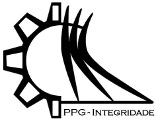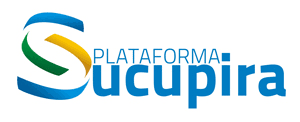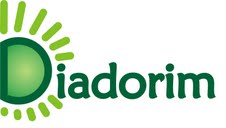ANÁLISE NUMÉRICA DO ARRANCAMENTO DE FIBRAS DE AÇO USANDO ELEMENTOS FINITOS
DOI:
https://doi.org/10.26512/ripe.v2i18.20952Keywords:
Concreto reforçado. Fibras de aço. Elementos finitos.Abstract
No concreto reforçado com fibras de aço, a interação entre fibras e a matriz de concreto é de suma importância para o desempenho do compósito. A boa interação destes componentes permite o aumento da capacidade de absorção de energia do compósito. Neste contexto, este trabalho apresenta a simulação numérica de ensaios experimentais de arrancamento de fibra de aço usando o método dos elementos finitos. Os resultados destas simulações são úteis na verificação dos parâmetros do contato, os mesmo que podem ser utilizados em outras analises numéricas. O concreto foi simulado utilizando um modelo constitutivo não linear com previsão de trinca. Para a fibra foi utilizado o modelo perfeitamente elasto-plástico. Para simular o contato foi proposto um modelo tensão cisalhante-deslizamento semelhante ao proposto pelo CEB-FIP. Os resultados obtidos apresentaram boa concordância quando comparados com os ensaios experimentais. Nas simulações também foi verificado que as fibras de aço com seções transversais diferentes apresentaram uma força de arrancamento maior. Finalmente os parâmetros utilizados do contato, validados através das simulações dos ensaios foram aplicados na simulação de uma viga reforçada com fibras.
References
Cunha, V. M. C. F. (2010). “Steel fibre reinforced self-compacting concrete - from micromechanics to composite behaviour”. Tese de doutorado. University of Minho, p. 365.
Cunha, V. M. C. F, J. A. O. Barros e J. M. Sena-Cruz (2011). “An integrated approach for modelling the tensile behaviour of steel fibre reinforced self-compacting concrete”. Em: Cement and Concrete Research 41.1, pp. 64”“76.
Durand, F. R. D. (2008). “Análise tridimensional de estruturas geotécnicas submetidas a reforço e drenagem”. Tese de doutorado. Universidade de Brasília, p. 176.
Durand, R e M. M Farias (2012). “Nonlinear joint element for the analysis of reinforcement bars using finite elements”. Em: Blucher Mechanical Engineering Proceedings 1.1, pp. 3253”“ 3268.
Kotsovos, M. D. (2015). Finite-element Modelling of Structural Concrete: Short-term Static and Dynamic Loading Conditions. CRC Press.
Li, Victor C., Youjiang Wang e Stanley Backer (1991). “A micromechanical model of tensionsoftening and bridging toughening of short random fiber reinforced brittle matrix composites”. Em: Journal of the Mechanics and Physics of Solids 39.5, pp. 607”“625.
Mihai, Iulia C, Anthony D Jefferson e Paul Lyons (2016). “A plastic-damage constitutive model for the finite element analysis of fibre reinforced concrete”. Em: Engineering Fracture Mechanics.
Mohamed, Maalej, Victor C. Li e Toshiyuki Hashida (1995). “Effect of fiber rupture on tensile properties of short fiber composites”. Em: Journal of engineering mechanics 121.8, pp. 903”“ 913.
Sena-Cruz, J. M. (2005). “Strengthening of concrete structures with near-surface mounted CFRP laminate strips”. Tese de doutorado. University of Minho, p. 216.
Van Hauwaert, A e J.G.M. Van Mier (1998). “Computational modelling of the fibre-matrix bond in steel fibre reinforced concrete”. Em: Fracture mechanics of concrete structures, Freiburg, Germany, pp. 561”“71.
Yoo, Doo-Yeol, Young-Soo Yoon e Nemkumar Banthia (2015). “Flexural response of steelfiber- reinforced concrete beams: Effects of strength, fiber content, and strain-rate”. Em: Cement and Concrete Composites 64, pp. 84”“92.
Zienkiewicz, Olgierd Cecil e Robert Leroy Taylor (2000). The finite element method: The Basis. Vol. 1. Butterworth-heinemann.
Downloads
Published
Issue
Section
License
Given the public access policy of the journal, the use of the published texts is free, with the obligation of recognizing the original authorship and the first publication in this journal. The authors of the published contributions are entirely and exclusively responsible for their contents.
1. The authors authorize the publication of the article in this journal.
2. The authors guarantee that the contribution is original, and take full responsibility for its content in case of impugnation by third parties.
3. The authors guarantee that the contribution is not under evaluation in another journal.
4. The authors keep the copyright and convey to the journal the right of first publication, the work being licensed under a Creative Commons Attribution License-BY.
5. The authors are allowed and stimulated to publicize and distribute their work on-line after the publication in the journal.
6. The authors of the approved works authorize the journal to distribute their content, after publication, for reproduction in content indexes, virtual libraries and similars.
7. The editors reserve the right to make adjustments to the text and to adequate the article to the editorial rules of the journal.









